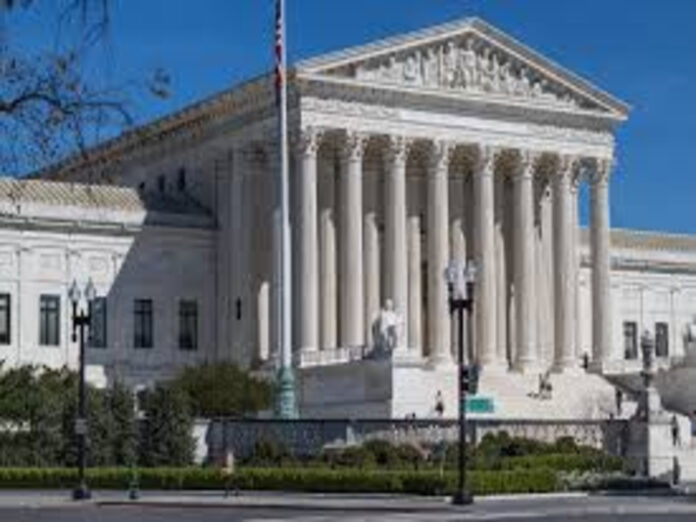High Court Extends Stay As Congress Moves Toward Reopening Government
Wednesday, November 12, 2025, 10:30 A.M. ET. 4 Minute Read, By Jennifer Hodges, Political Editor: Englebrook Independent News,
WASHINGTON, DC.- The Supreme Court of the United States on Tuesday extended its temporary stay of a lower-court ruling that ordered the U.S. Department of Agriculture (USDA) to pay full November benefits under the Supplemental Nutrition Assistance Program (SNAP), as the federal government shutdown is about to enter its seventh week.
The unsigned order keeps the stay in place until at least 11:59 p.m. EST on Thursday, November 13, 2025, giving Congress additional time to pass a government funding bill before any forced disbursement of SNAP funds.
“The application for a stay of the district court’s judgment is granted, pending further order of the Court,” the justices wrote in their brief ruling.
Justice Ketanji Brown Jackson, who originally issued the emergency stay late last Friday, dissented, saying she would have denied the stay extension. The decision provides the Trump Administration a temporary victory in its challenge to lower-court orders directing immediate benefit payments to roughly 42 million Americans.
Legal Background And Case Status;
On November 6, 2025, U.S. District Judge John J. McConnell Jr. in Rhode Island ordered the USDA to release approximately $4 billion in November SNAP benefits. The Trump Administration immediately appealed, arguing that SNAP payments cannot be compelled during a shutdown without an active appropriation from Congress.
Justice Jackson issued an initial administrative stay on November 7, 2025, allowing the First Circuit Court of Appeals to review the case. When the appeals court declined to block the order, the Department of Justice returned to the Supreme Court seeking an emergency extension, arguing that enforcing the district court’s mandate would constitute an “improper appropriation” of federal funds.
With Tuesday’s extension, the Supreme Court effectively paused all lower-court rulings while the shutdown funding dispute remains unresolved, preserving the administration’s authority over SNAP allocations.
Congress Pushes To End Shutdown;
The federal government shutdown, now in its 43rd day, began on October 1, 2025, following a budget impasse over domestic spending priorities.
On Monday, the U.S. Senate approved a bipartisan measure to reopen the government and fund the USDA, including SNAP, through fiscal year 2026. The House of Representatives is expected to vote late Wednesday night or early Thursday morning.
Administration officials have told the Court that once the measure passes and funding resumes, the SNAP case will become moot.
SNAP Program Growth And Fraud Concerns;
When President Lyndon B. Johnson signed the Food Stamp Act of 1965, only 561,261 Americans participated in the program. At the time, the U.S. population was approximately 194.8 million.
Sixty years later, in 2025, participation has soared to roughly 41.7 million people, an increase of 7,330 percent. Over the same period, the U.S. population grew to about 343.6 million, a rise of just 78.7 percent.
The comparison underscores how the program has expanded far beyond its original scope. What began as a limited safety net to help families through temporary hardship has evolved into one of the most extensive federal assistance programs in American history.
In fiscal year 2024, SNAP cost taxpayers nearly $100 billion, serving about 12 percent of the nation’s population. Despite its reach, the program continues to face serious challenges with oversight and integrity.
The Government Accountability Office (GAO) reported that in 2023, approximately 11.7 percent of SNAP benefits, or $10.5 billion, were issued improperly, including both administrative errors and fraudulent claims. Additional investigations estimate that total annual losses from fraud and theft could reach $12 billion.
Critics argue that these numbers reveal a shift away from the Food Stamp Act’s original intent, to help Americans “get back on their feet.” Instead, the program has increasingly functioned as a long-term entitlement, with participation rates remaining high even during periods of economic growth.
Implications And Next Steps;
The Supreme Court’s decision to extend the stay reflects a broader constitutional question about how far the judiciary can compel spending during a lapse in congressional appropriations.
For millions of Americans, the uncertainty remains: several states have already begun issuing full benefits under earlier court orders, while others have withheld payments awaiting the Supreme Court’s final word.
If the House passes the Senate’s funding bill and the President signs it into law, full SNAP operations are expected to resume immediately, likely ending the legal standoff.
Yet the dispute has reignited debate over the scope of federal entitlement programs, the limits of executive power during shutdowns, and the sustainability of long-term welfare spending amid mounting national debt.
Editor’s Note:
This article was written by Jennifer Hodges, Political Editor, for the Englebrook Independent News.
All facts and figures have been verified through court filings, U.S. Census Bureau data, USDA historical records, and federal reports as of November 12, 2025.


